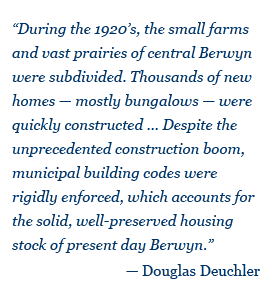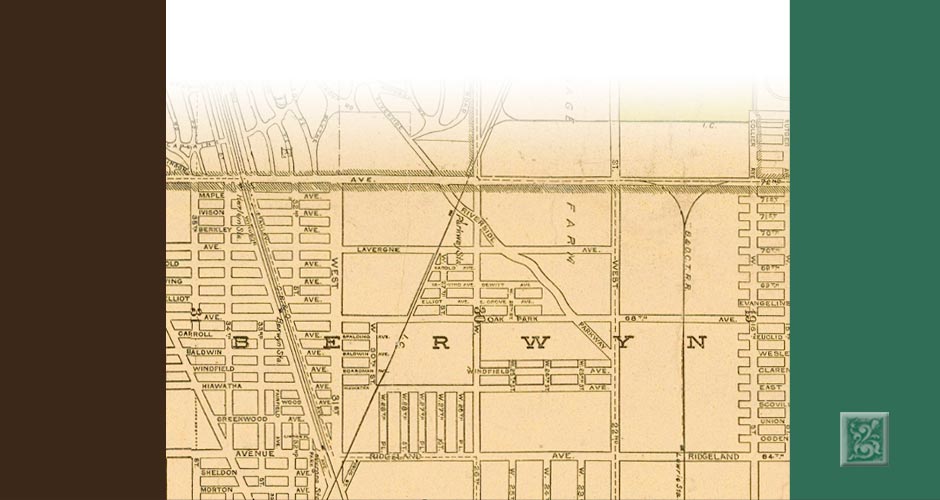
Historic Berwyn’s Bungalow Tour
Sunday September 29, 2019 – noon to 5 pm
Berwyn’s History — Berwyn Today
Bungalows Today
Berwyn has the most significant collection of Chicago-style bungalows in the nation. Traditionally, Berwyn Bungalows are one-story buildings with basement and attic, two to three bedrooms, and a living and dining room. Decorative details included oak woodwork and stained glass windows. The finances of the owner at the time they were built determined the specific design of the windows, roofs, and interiors. These bungalows, built between the 1920’s through the 1940’s, range in style from smaller one or one-and-a- half story units to the larger, “super” bungalows, with two full stories, glazed brick exteriors and tile roofs — some in flashy colors like blue, blue-green or multicolor.
half story units to the larger, “super” bungalows, with two full stories, glazed brick exteriors and tile roofs — some in flashy colors like blue, blue-green or multicolor.
During those years, Berwyn boasted of being the fastest growing city in the United States. Even as recently as 1991, the Chicago Sun-Times reported that “Berwyn has the highest concentration of financial institutions in the world - a tribute to the frugality of its forebears.” Cermak Road, Berwyn’s primary business corridor, was once known as “The ”
Families with Czech and Bohemian roots, together with many Italian-Americans, Greeks, Lithuanians, Poles, Yugoslavians and Ukrainians, have been joined in recent years by Hispanics, African and Asian Americans who now call Berwyn home. As Berwyn moves into the 21st century, its traditionally hard-working, middle-class, mostly blue collar families, who were admittedly conservative in their outlook, are joined by young, professional families and a growing population of gay and lesbian residents.
Now, just as in those early times, Berwynites are justly proud of “Beautiful Berwyn.” With its tree-lined streets, sturdy brick bungalows, and Victorian “painted ladies,” Berwyn continues to be a stable, safe, and diverse community. With the continuing efforts of its homeowners, business community, civic organizations, and city government, Berwyn looks forward to its “second century” as it celebrates its rich and varied past.




